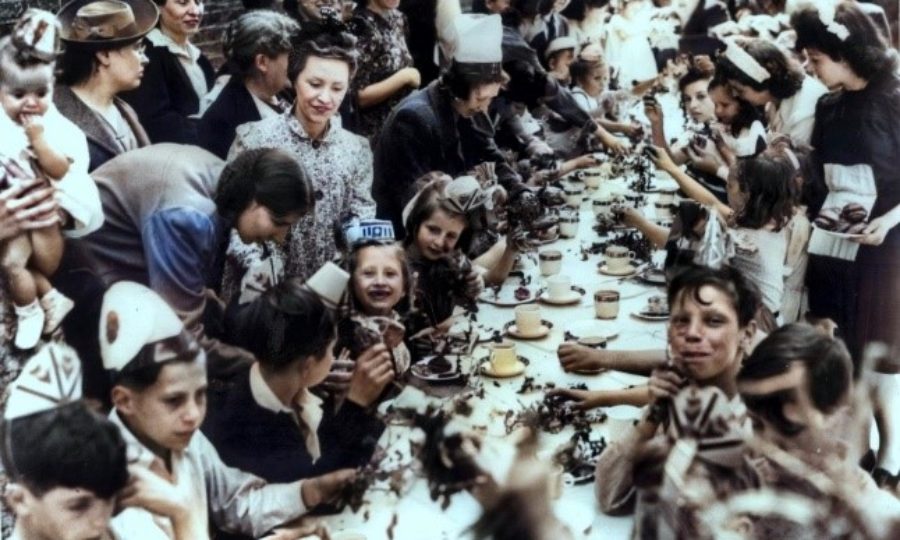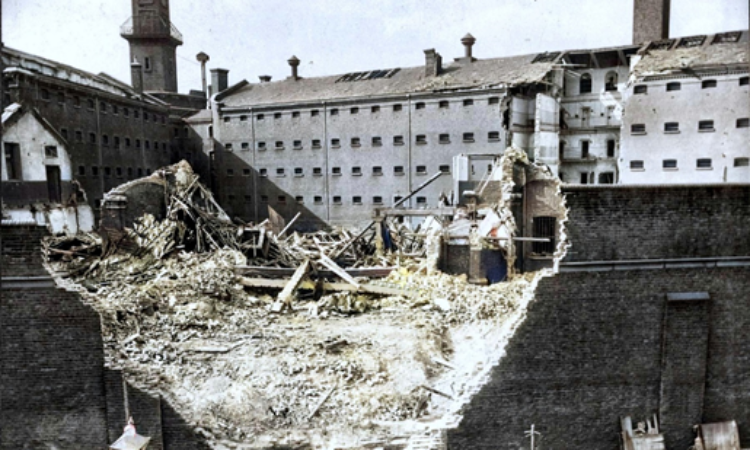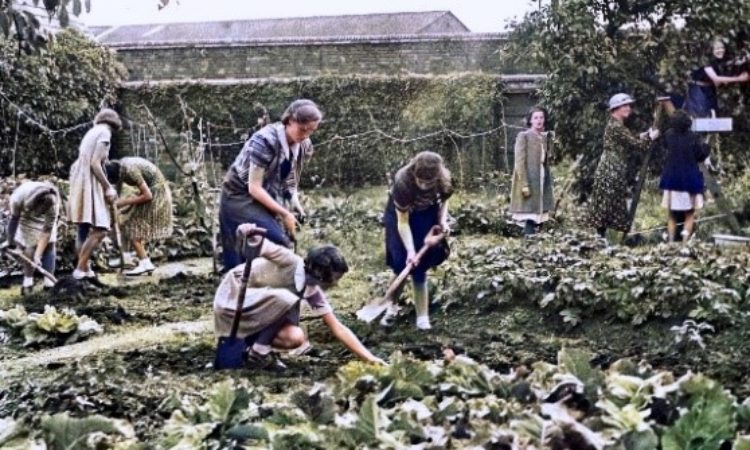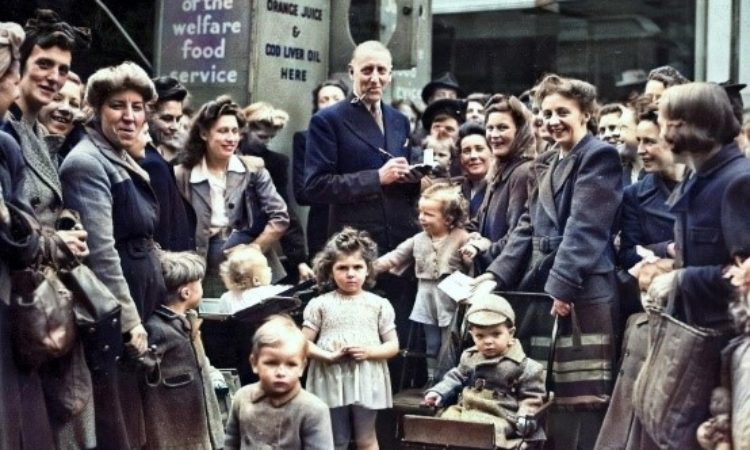Islington on the Home Front during the Second World War

The 80th anniversary of the start of the London Blitz (7 September 1940 – 10/11 May 1941), during the Second World War, is being remembered nationally from Monday 7 September 2020.
Find out more about Islington during the London Blitz:
Blitzed Islington: Islington and the London Blitz (1940-41)
The Blitz Period in Islington (1940-41) – a contemporary account
Islington and the Last Night of the Blitz (10/11 May 1941)
The Second World War was a conflict fought on several fronts. Not only was victory secured by the forces fighting on the front line, but also by the daily sacrifice and determination of the people they left behind on the ‘Home Front’.
Islington and Finsbury
This experience between 1939 and 1945 was unique in British history. Twelve million British families fought their own battle, including those in Islington and Finsbury, who went without all but the most basic necessities. Civilians, alongside men and women in the armed forces not posted abroad, all endured the hardships and sudden dangers in what also became known as the ‘people’s war’.

Pentonville Prison, Caledonian Road, May 1941
Aspects of the Home Front were common to all: rationing, the blackout and, more terrifyingly, enemy air raids and the threat of untimely death. Like many parts of inner London, the area suffered badly from bombings during the Blitz from 1940-41, and as a target for V1 and V2 rocket attacks on the capital from the summer of 1944. It was to prove a long period of regulation and shortage, uncertainty, boredom, fear and anxiety, and a time of dramatic change.

Tollington Park Central School evacuees, Huntingdon, 1939/40
Children were evacuated, men and women conscripted into the forces or directed into essential war work, homes disrupted, and lives were put on hold for an indefinite duration. Those not called to the armed forces helped the country in many ways: Civil Defence, the Women’s Voluntary Service, working in munitions factories, digging for victory, raising money for the ‘war effort’, or simply making a contribution by remaining cheerful and ‘making do’.
We’ll Meet Again exhibition

Finsbury Food Centre, 1942
With its title taken from one of the most famous songs of the war, and sung by Vera Lynn, ‘We’ll Meet Again: Islington on the Home Front during the Second World War in photograph (1939-45)’ exhibition portrays Islington and Finsbury’s home-front experience during these six historic years.
However, despite increasing fatalities and an uncertain future and hardship, Islingtonians and Finsburyites on the Home Front kept ‘calm and carried on’.
Marking the 75th anniversary of the end of the Second World War in Europe, this photographic exhibition commemorates all who bravely endured life on the Home Front in Islington, Finsbury and beyond.
The scheduled, full exhibition will be on show at Islington Museum later in 2020.
‘We’ll Meet Again’ is dedicated to the memory of Islington historian and resident Mary Cosh (1919-2020).
- Visit the ‘We’ll Meet Again’ exhibition homepage
- View the ‘We’ll Meet Again’ exhibition photographic presentation
Islington on the Home Front during the Second World War
Articles and blogs
- Finsbury under attack (1939-45)
- Highbury Corner V-1 attack (1944)
- Islington Faces: Ros Tankard and Second World War Islington memories
- We’ll Meet Again: An introduction to the exhibition
- We’ll Meet Again: Islington’s Evacuations
- Revelry and jubilation, bonfires, squibs and brass bands: VE-Day celebrations in Islington and Finsbury 1945
- We’ll Meet Again: Islington’s Shelters
- We’ll Meet Again: Bomb Damage – Destruction
- We’ll Meet Again: Bomb Damage – Islington in Action
- The German Destroyer in Finsbury
- We’ll Meet Again: Home Front Preparations
- Each bob you pay keeps the bomber away: The Islington Spitfire
- We’ll Meet Again: Carry On!
- Researching We’ll Meet Again: A Volunteer’s Experience
- We’ll Meet Again: VE-Day Celebrations
- How Islington greeted VJ Day 1945
- Blitzed Islington: Islington and the London Blitz (1940-41)
- The Blitz Period in Islington (1940-41)
- Islington and the Last Night of the Blitz (10/11 May 1941)
- Hitler’s Guy Fawkes Day Surprise: The Archway V2 Rocket Attack 1944
Resources
- Second World War Resources at Islington Local History Centre
- BBC People’s War: Islington experiences in the Second World War
- Bombsite: Bombs dropped in Islington during the Second World War (October 1940 – 6 June 1941)
- Commonwealth War Graves Commission: Commemorating the fallen
- Imperial War Museum Collection: Islington
Islington Online Book of Remembrance
This Islington Online Book of Remembrance commemorates over 13,000 men, women and children of Islington who died as a result of war at home and overseas and abroad. Records run from 1899, the beginning of the Boer War, to the 1950s. We have provided some biographical information so that more may be learned about them, such as with whom they served, where they lived in the borough and where they died. Over 4,000 entries relate to the Second World War.
We have used many primary sources to compile the Book of Remembrance (BOR) but it is possible that you have more information, or photographs perhaps, that we could add. If so, please contact the BOR team at Islington Local History Centre.
Also, if you wish to submit content or simply leave a tribute, click on the link below, enter the name of the person you wish to view or remember and locate the content link in the record or use the tribute link on the left side of the entry.
- View the Islington Online Book of Remembrance
More Local History
- Barnsbury and Caledonian Road
- Archway and Tufnell Park
- Nag’s Head and Holloway
- Angel an Pentonville
- Bunhill and St Luke’s (Finsbury)
- Finsbury Park and Stroud Green
- Highbury
- Clerkenwell
- Islington Central and Canonbury
- Newington Green
- Victoria Cross memorial stones
- Streets with a story
- Islington during the First World War
- Islington and Holloway Fire Stations
- Society of Genealogists
- D-Day (1944-2019)
- Highbury Corner V-1 bomb
- Italians in Islington
- Islington on the Home Front during the Second World War
- Islington’s Pride: Our heritage, our future
- Islington as a Place of Refuge
- Barging Through Islington: 200 Years of the Regent’s Canal
- A short history of waste and recycling in Islington
- Gay Liberation Front at 50
